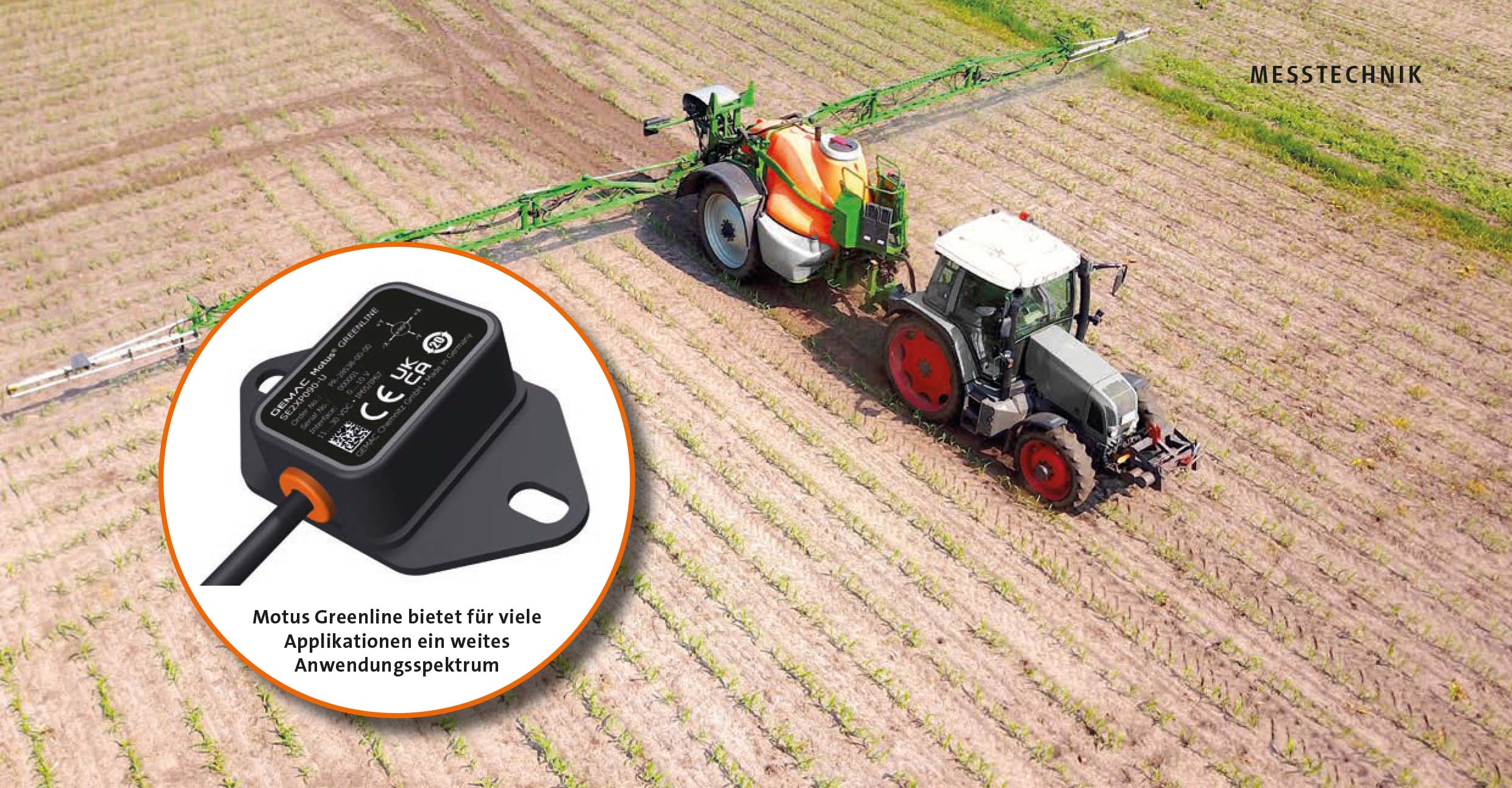Wide variety for precise inclination measurements: GEMAC expands sensor portfolio
GEMAC Chemnitz GmbH, a specialist for inclination and inertial sensors, is now launching two further product lines of a dynamic inclination sensor following the successful market launch of the GEMAC Motus®. In addition to the new GEMAC Motus® BLACKLINE product variant in a plastic housing, the GEMAC Motus® GREENLINE variant will expand the portfolio of the new sensor generation.
GEMAC Motus - High precision premium variant with accuracy from ±0.1°
The GEMAC Motus® is a sensor measuring unit that can be configured for a wide range of applications and enables 6-axis motion detection on mobile machines such as construction machinery, agricultural machinery, forestry machinery, cranes and lifting equipment as well as ships.
In mobile working areas, sensors are sometimes exposed to very adverse conditions, such as strong temperature fluctuations, wetness, vibrations and heavy contamination. The sensor fusion algorithm developed by GEMAC, with the “Enhanced Kalman Filter” specially optimized for motion detection, handles the precise orientation calculation and is even more robust in harsh working environments. It enables the correction of non-linear disturbances and thus even better damping of external accelerations or vibrations. Manual and individual con guration of the sensor fusion is possible at any time and can thus be optimally adapted to the application and its environment.
In addition, the filter parameters are automatically adapted according to the sensor’s state of motion. The sensor recognizes its current position as well as the type of its movement and independently adapts the sensor fusion filter. Disturbances such as impacts or jerky rotations are reliably detected and compensated for by the sensor. An improved offset correction of the gyroscope allows a reduced drift of the output data. The sensor thus provides even more reliable values in very dynamic applications and continuous movement of a mobile machine, leading to improved dynamic accuracy.
GEMAC Motus® is available in three basic types with different technical specification:
- XB/XC as an inertial measurement unit (IMU) with acquisition of static/dynamic inclination, acceleration and rotation rate
- IB as an inertial measurement unit (IMU) with acquisition of acceleration and rotation rate
- NB/NC as dynamic inclination sensor
GEMAC Motus BLACKLINE – The precise basic variant
The GEMAC Motus® BLACKLINE variant, which will replace the previous Basicline and Classicline product lines, has comparable technical features to its big brother GEMAC Motus®, but also offers cost-effective variants in the plastic housing and the additional availability as a purely static inclination sensor.
GEMAC Motus® BLACKLINE will also be available in three basic types with different technical specifications:
- XB/XC as an inertial measurement unit (IMU) with acquisition of static/dynamic inclination, acceleration and rotation rate
- NB/NC as dynamic inclination sensor
- SB/SC as static inclination sensor
All product lines have been divided into three cross-line performance levels based on their accuracy, with Level E (GEMAC Motus® GREENLINE SE/NE/XE) being the lowest and Level C (GEMAC Motus®/ GEMAC Motus® BLACKLINE SC/NC/XC) the highest. Level B as a medium basic level (SB/NB/XB) is suitable for a wide and diverse range of applications in mobile working areas. In Level B (SB, NB, XB), both product lines already offer static accuracy from ± 0.3 ° and dynamic accuracy from ± 0.5 °. Level C (NC, XC) also has a static accuracy of ± 0.1 °. The GEMAC Motus® alone offers the highest performance in its Level C with a dynamic accuracy of ± 0.25 ° and is therefore ideally suited for all applications in which high-precision position determination and control must be realized under dynamic processes, such as at great heights and depths or in shipping.
Further advantages at a glance:
- Automatic configuration of the mounting position
- Flexible zero point adjustment
- All product lines are available for five different interfaces: For the analog interfaces current and voltage as well as for the digital interfaces CAN, CANopen and SAE J1939.
- On request, the GEMAC Motus® BLACKLINE and GEMAC Motus® GREENLINE versions are also available in different colors for customer-specific projects.
- By combining and calculating all measured values directly in the measuring unit, only one measuring system needs to be requirements to be integrated in the mobile application.
- The sensor measuring units, which can be parameterized very conveniently via a programming kit, enable the user to adapt his applications optimally with the sensors to the existing technical requirements.





